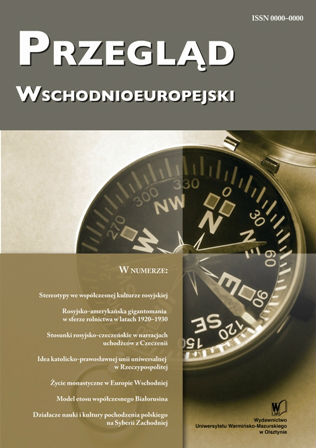Żołnierze 5 Dywizji Strzelców Polskich w bolszewickiej niewoli i ich repatriacja
Soldiers of the 5th Polish Rifle Division in Bolshevik Captivity and their Repatriation
Author(s): Dariusz RadziwiłłowiczSubject(s): Military history, Political history, Social history
Published by: Wydawnictwo Uniwersytetu Warmińsko-Mazurskiego w Olsztynie
Keywords: Civil war in Russia; Poles in Siberia; Bolsheviks; 5th Polish Rifle Division; Captivity; repatriation
Summary/Abstract: The formation of Polish armed troops began in summer 1918, during the battles between troops of the Czechoslovak Corps (Radziwiłłowicz 2010, 107–126), “white” Russians and Bolsheviks in the Volga region and in Siberia. Earlier that year, small Polish troops began to form spontaneously, taking their names from the towns of formation; therefore, those were, among others, Omsk, Irkuck, Semipalatynsk “legions”. In October 1918, due to a Bolshevik offensive, Polish forces were stationed in Novonikolayevsk (now Novosibirsk) on the Ob river. A division with three rifle regiments, a light artillery regiment and a lancer regiment was formed in 1918 and 1919. The newly-formed troops made up a tactical unit which drew on the tradition of the 5th Polish Rifle Division of the 2nd Polish Corps, with the same number and name (Radziwiłłowicz 2009). More ambitious organisational plans were developed for a supra-division command structure: the Polish Army Command in Eastern Russia and Siberia. From the end of November 1919 to early January 1920, over a distance of nearly a thousand kilometres, troops of the 5th Polish Rifle Division divided into 57 echelons and evacuated by the decrepit Trans-Siberian Railway as the rearguard of the allied forces, through the area of a civil war, among the hostile population of Siberia. The capitulation of the 5th Polish Rifle Division at the Klukviennaya station came as a surprise, not only to its command. The behaviour of the Czechoslovak commanders blocking the railroad, when troops of the Soviet 5th Army and Bolshevik guerrillas attacked the stretched Polish echelons, was regarded as deliberate and aimed at the liquidation of the Polish division. The commander of the Polish division, Colonel Kazimierz Rumsza with a group of his followers, as well as over a thousand officers and privates, who had no illusions that Bolsheviks would observe certain wartime and moral standards adopted by both parties of the conflict, avoided Bolshevik captivity and its cruelty. This group made their way to Harbin in Manchuria, from where a small number of Polish troops were evacuated by sea to Poland (Radziwiłłowicz 2015). The remainder of the division, after surviving the hell of Soviet POW and labour camps, returned to Poland in 1921 and 1922 by repatriation transports. About 4 thousand soldiers of the 5th Polish Rifle Division did not survive the hardships of the camps and the cruelty of the Cheka.
Journal: Przegląd Wschodnioeuropejski
- Issue Year: VIII/2017
- Issue No: 1
- Page Range: 23-43
- Page Count: 21
- Language: Polish

